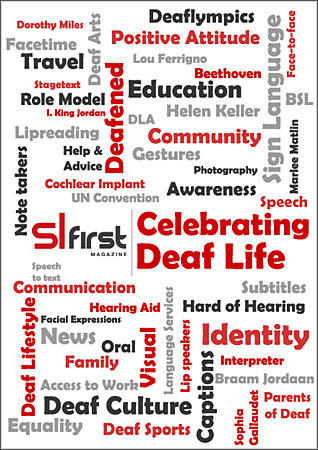News10th October 2014
‘Next Generation Text’ service welcomed by Hearing Link
Always behind the times with Deaf communication, Text Relay Service jumps forwards
 News Release: 6 October 2014
News Release: 6 October 2014
UK hearing loss charity Hearing Link has welcomed BT’s launch of the ‘Next Generation Text’ service, which offers a new telecommunication solution for people who can’t use a standard phone because of hearing and speech impairment.
Dr Lorraine Gailey, Chief Executive of Hearing Link, said: “It is great news that this long-awaited service is now available and we welcome the flexibility and freedom that it offers to users. We know how disappointed many people were when the service was delayed from the expected launch in April but we are pleased that the issues that caused the delay have all now been resolved."
 “The service has already met with the approval of early testers so users are set to have a good experience. We shall be taking a keen interest in user feedback, most especially from those who are using the service because they have severe or profound hearing loss. Our friendly helpdesk team are on hand if anyone wishes to direct questions to them.”
“The service has already met with the approval of early testers so users are set to have a good experience. We shall be taking a keen interest in user feedback, most especially from those who are using the service because they have severe or profound hearing loss. Our friendly helpdesk team are on hand if anyone wishes to direct questions to them.”
BT’s Next Generation Text (NGT) service offers a text-based function to allow people to communicate with others over the phone either directly or through a relay assistance. A relay assistant is a person who acts as an intermediary to convert speech to text and vice versa for the two people in the conversation.
NGT can be accessed through the existing specialised terminals used for the current national text to voice relay service run by BT. In addition, users can download an app, compatible with Android and Apple devices and personal computers, to allow them to access the service whilst on the move.
 The app-based option is known as NGT Lite. It gives deaf, hearing impaired and speech impaired people greater freedom and flexibility by allowing them to make phone calls wherever they are, so long as they can access the internet. By contrast, the specialised terminals have to be fitted into someone’s home or workplace so can’t be used anywhere else.
The app-based option is known as NGT Lite. It gives deaf, hearing impaired and speech impaired people greater freedom and flexibility by allowing them to make phone calls wherever they are, so long as they can access the internet. By contrast, the specialised terminals have to be fitted into someone’s home or workplace so can’t be used anywhere else.
Another benefit of the NGT service is the way it is set up to allow both the voice and text channels to be open at the same time, which allows conversation to flow more naturally.

This means that people with some hearing can listen to what the other person is saying but they can also have the added back-up of text for the conversation they can’t make out. For someone who can’t hear at all but can use their voice, the phone allows them to speak directly to the other person while the other person’s speech is translated to text by the relay assistant.
Users of the NGT service can link a TextNumber, which looks like a standard phone number, to their home, work or mobile number so that when someone dials the TextNumber the call is automatically connected to the NGT service without the need for a caller to dial a special prefix.
The new NGT Lite app can be downloaded free for computers at www.ngts.org.uk <http://www.ngts.org.uk> . For Android smartphones and tablets, the app can be downloaded from the Google Play Store and it can be downloaded from the Apple Store for iPhones and iPads. People can also find more information about NGT service and how it could benefit them at the website www.ngts.org.uk <http://www.ngts.org.uk> .
 Colin Lees, BT Business chief information officer, said: “The app is free and easy to download and will give you greater flexibility and freedom - you can use the service at home, at work or on the move without the need for a specialised device.”
Colin Lees, BT Business chief information officer, said: “The app is free and easy to download and will give you greater flexibility and freedom - you can use the service at home, at work or on the move without the need for a specialised device.”
Article by Sarah Lawrence
posted in Community / News
10th October 2014





